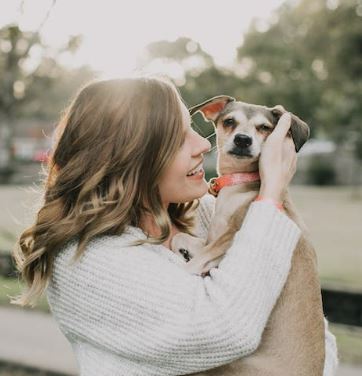Imagine living in a world where dogs played a crucial role in ancient civilizations, acting as guardians, hunters, and spiritual guides. As incredible as it sounds, it’s not just a tale from a far-fetched storybook; it’s the reality of our canine companions’ storied past. In this intriguing and somewhat abstract journey, we’ll explore how the bond between humans and dogs shaped the course of history and brought us closer to understanding our four-legged friends.
The Egyptian Canine Connection to Ancient Civilizations
When you think of ancient Egypt, images of sphinxes, pyramids, and pharaohs likely come to mind. But did you know that this civilization also held dogs in high regard? Many breeds, such as the Saluki and the Greyhound, were considered sacred and often depicted in Egyptian art. Dogs served as hunting companions, protectors of the afterlife, and even as symbols of various deities. Anubis, the god of the dead, was often portrayed with the head of a jackal, showcasing the deep connection between the spiritual world and our canine companions.
The Mayan Dog Mystique
The Mayan civilization, which thrived in present-day Mexico and Central America, also valued dogs for their spiritual significance. The Xoloitzcuintli, or Xolo for short, was considered a sacred breed believed to possess healing properties. The Mayans believed that these hairless dogs could absorb the negative energy of their owners, purifying them spiritually. Xolos also played a key role in the Mayan afterlife, guiding the souls of the deceased through the treacherous path to the underworld.
The Ancient Greeks and Their Hounds
In ancient Greece, dogs were admired for their loyalty, bravery, and hunting prowess. Greek mythology is replete with stories of heroic dogs, such as Argos, the loyal companion of Odysseus, who patiently waited for his master’s return after a 20-year absence. Moreover, Cerberus, the three-headed hound, guarded the entrance to the underworld, ensuring that no living being could enter and no soul could escape. The Molossus, an ancient breed known for its size and strength, was used as a war dog and a guardian, setting the foundation for many modern working breeds.
The Roman Canine Legacy
The Roman Empire, known for its military might and architectural prowess, also saw the value in canine companions. Roman dogs were often employed in various roles, from hunting to guarding livestock and property. The Romans even bred dogs for specific tasks, giving rise to breeds like the Neapolitan Mastiff and the Cane Corso. Roman soldiers would march into battle alongside their canine counterparts, and many wealthy families would proudly display statues of their faithful hounds as a symbol of loyalty and protection.
The Spirituality of Dogs in Buddhism
In some Buddhist teachings, dogs are considered to be one of the most spiritually evolved beings, given their innate ability to provide love, loyalty, and companionship. Some stories even recount the Buddha taking the form of a dog to teach valuable lessons to his followers. Today, dogs continue to play a significant role in the lives of Buddhist monks, who often care for stray dogs and provide them with food and shelter.
As we’ve journeyed through time, it’s clear that dogs have played a vital role in the development of human civilization. From ancient Egypt to the Mayan civilization, from Greece and Rome to the spiritual teachings of Buddhism, our furry friends have touched the lives of countless individuals and shaped the course of history.
By understanding and appreciating the canine connection to ancient civilizations, we can strengthen our bond with our dogs and better cater to their needs.

Marissa Delotta, 36, from Dayton, Ohio, is the creative force behind Roverboard.com, a beloved online destination for dog lovers. As a dedicated mom and canine enthusiast, Marissa combines her family experiences with her love for dogs to offer a platform where dog owners can exchange tips, heartwarming stories, and advice. Her website has become a vibrant community for sharing the joys of dog parenting. In her free time, Marissa enjoys exploring dog parks with her family and volunteering at local animal shelters.